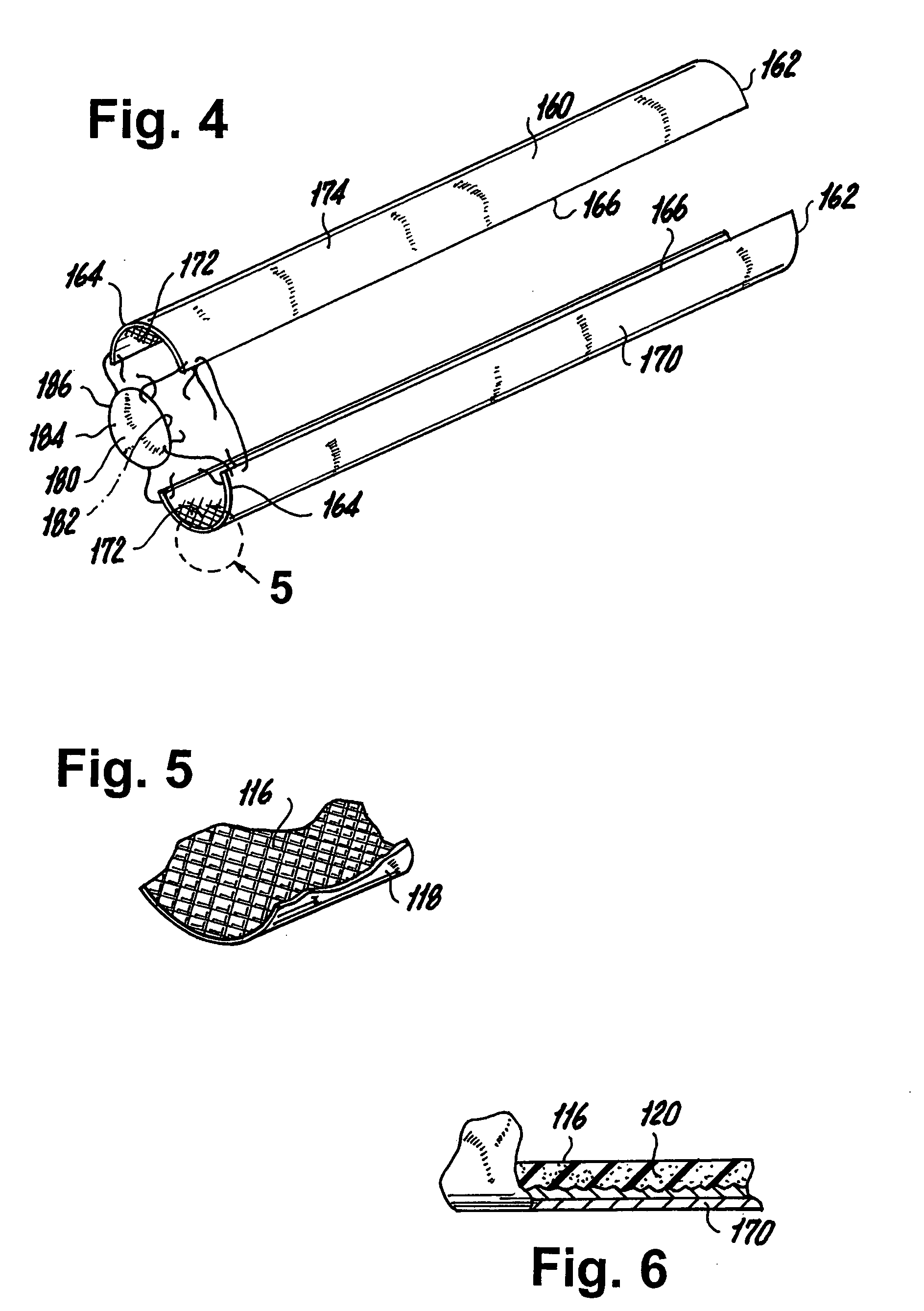Liner with exterior coating for use with prosthetic devices
a technology of prosthetic devices and liner, applied in the field of articles, can solve the problems of amputees experiencing wear discomfort, interface can become an area of discomfort, and cannot provide a form fit of amputee's residuum, and achieve the effects of limiting stress associated, less elasticity, and limiting stress of distal end elongation
- Summary
- Abstract
- Description
- Claims
- Application Information
AI Technical Summary
Problems solved by technology
Method used
Image
Examples
example
[0101] A liner is provided and a mask is placed on the liner such that an area is exposed where the coating is to be formed. The liner is then placed on a mandrel that is operatively coupled to a device (e.g., a lathe) that can selectively rotate the liner. The liner includes the pin receptacle. The rotating device is actuated so that the liner is rotated at a speed between about 30-40 RPM.
[0102] The coating material is prepared and is a polyurethane material commercially available under the trade name Poly 74-40 from Polytek of Easton, Pa. This material is a two part RTV liquid rubber (polyurethane mold rubber) that consists of part A and part B, which after mixing, cure overnight at room temperature to flexible high strength RTV mold rubbers. Typically, 2 parts A is mixed with 1 part B to form the coating material. The curing of Poly 74-40 can be accelerated with the addition of a predetermined amount (e.g., up to 3%) of 74 / 75 Part X (by weight of total mix), which is also availa...
PUM
 Login to View More
Login to View More Abstract
Description
Claims
Application Information
 Login to View More
Login to View More - R&D
- Intellectual Property
- Life Sciences
- Materials
- Tech Scout
- Unparalleled Data Quality
- Higher Quality Content
- 60% Fewer Hallucinations
Browse by: Latest US Patents, China's latest patents, Technical Efficacy Thesaurus, Application Domain, Technology Topic, Popular Technical Reports.
© 2025 PatSnap. All rights reserved.Legal|Privacy policy|Modern Slavery Act Transparency Statement|Sitemap|About US| Contact US: help@patsnap.com



